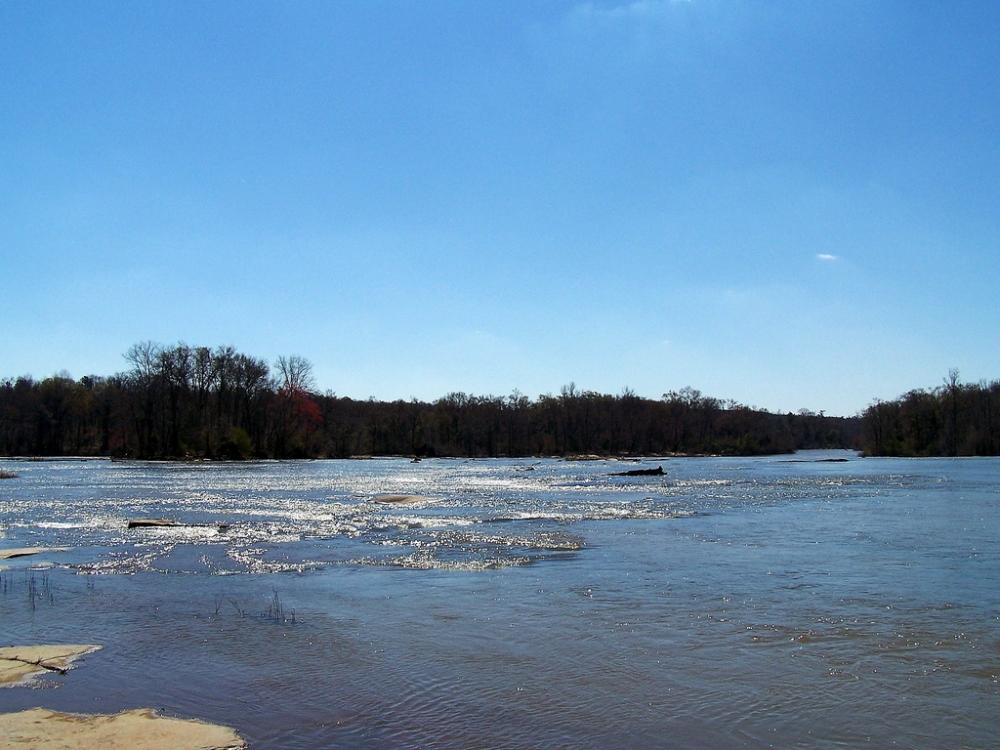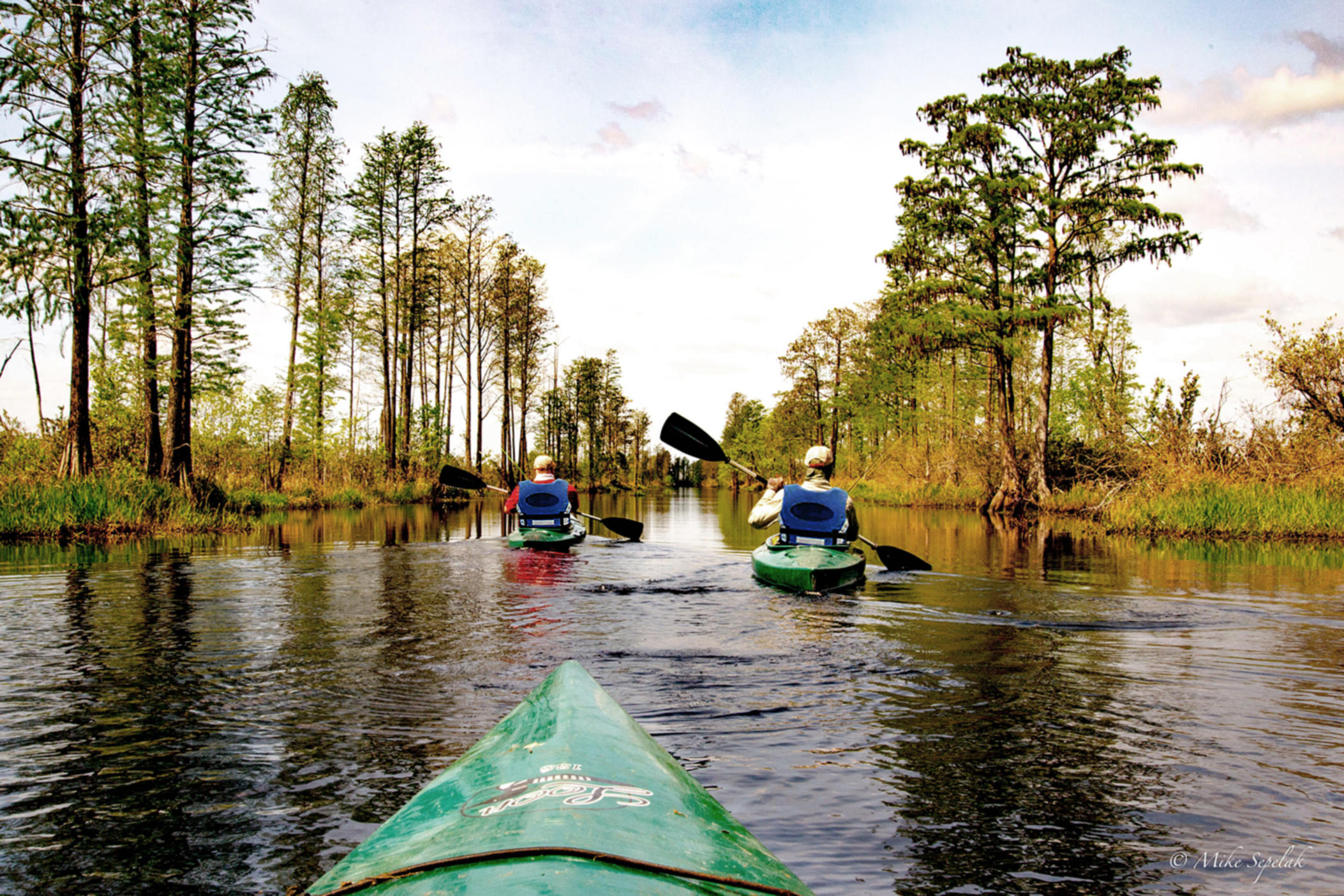
Section Branding
Header Content
Which Georgia rivers, swamps, reservoirs made the 'Dirty Dozen' list? See this year's report
Primary Content
The Georgia Water Coalition released its annual "Dirty Dozen" report highlighting the issues threatening the health of Georgia's waterways. This year's dozen includes rivers, creeks, aquifers, streams and swamps.
The report's purpose isn't to list the most polluted places in Georgia's waters, GWC said, but to "call to action for Georgia's leaders and its citizens to solve ongoing pollution problems, eliminate potential threats" to waterways and "correct state and federal policies and actions that lead to polluted water."
Georgia endorses itself as the "No. 1 state for business," but the 2024 Dirty Dozen report warns the state that, without a plan to make changes to some of the waterways, whether through laws or funding, the economy will be affected.
Here are the "Dirty Dozen" waterways excerpted from this year's report:
Abercorn Creek: Abercorn Creek is one of the waterways affected by the 2022 deepening of the Savannah Harbor, which has brought growth to surrounding coastal communities. The deepening development threatens the creek's surface and groundwater supplies because saltwater has intruded nearby waterways. The saltwater intrusion resulted in about 400,000 residents in Chatham, Effingham, and Bryan counties depending on the creek as its primary water source.
Altamaha River: The Altamaha River, or "Georgia's Little Amazon," is Georgia's largest river and third freshwater contributor to the Atlantic Ocean's North American eastern shore. It runs from Atlanta and Athens to Darien. It is polluted by about 60 miles of black discharge from the Jesup pulp mill, noticeable by its smell and discoloration in the water.
Conasauga River: The Conasauga River is a part of the Upper Coosa River basin, a tributary of the Alabama River. It is known for its aquatic biodiversity, with 30 species of mussels, snails, crayfishes, and fishes found exclusively there. The river is affected by PFAs, a group of man-made chemicals that firmly remain in the environment since wastewater treatments do not work to rid them. At Conasauga, the PFAs impact the river's wildlife and water quality for users, including those in Northwest Georgia and Northeast Alabama.
Coosa River : As mentioned, the upper Coosa River Basin is one of North America's "most biologically unique" river basins and feeds into Northwest Georgia. Affecting the river's groundwater is a closed coal ash pond at Georgia Power Company's Plant Hammond, a closed power plant on the banks of the river west of Rome, Georgia.

Flint River: Flint River goes 346 miles from metro Atlanta to southwest Georgia, joining the Chattahoochee River. In early 2024, in southwest Georgia, the Development Authority of Bainbridge and Decatur County were under scrutiny "when residents discovered that the authority had brokered a secret deal to provide a sweetheart loan, tax breaks, and more to a monkey breeding facility." The facility will house about 30,000 monkeys, more than the population in Decatur County, to sell for medical research. Citizens are concerned about several things with the facility, including its impact on natural resources like the Flint River.
Floridan Aquifer: Florida Aquifer is considered one the most productive aquifer systems worldwide, spanning about 100,000 square miles and covering all of Florida and parts of South Carolina, Georgia, Alabama, and Mississippi. It provides drinking water to 10 million people in its region, including all of South Georgia, with the most usage from Savannah. Since the growth from the Port of Savannah expansion, the aquifer's problems lie in the coastal water conflicts, with leaders of Chatham, Bryan, Effingham, Liberty, and Bulloch counties disputing with each other over water access.
Georgia's rivers: Georgia's river water is essential to energy production at fossil-fuel and nuclear power-generating facilities. Almost all of the water used in the 17% of water for energy production comes from Georgia rivers. Data centers are "large, climate-controlled facilities for managing and storing digital data." The centers are a problem for Georgia's Rivers as they use large amounts of electricity to power computers and water to feed the cooling systems. This year, Georgia Power Company informed the Public Service Commission that the projected power supply for Georgia's data centers jumped to levels 17 times higher than initially expected. Eighty percent of the increase is due to data centers.
Georgia's streams: Georgia's streams account for more than the total number of rivers within Georgia. While not all year-round, the streams are important because "they link land and water" while also being a vehicle for essential nutrients for aquatic flora and fauna to travel downstream. Healthy small streams often translate to big rivers where Georgians get drinking water and boat, fish, or swim. The conversion of forests and fields to construct new businesses and investments in Georgia causes dirt from cleared land to enter Georgia's streams when it rains, impacting property owners and Georgia's big rivers.
Georgia's water reservoirs: Georgia's Water reservoirs include Lanier, Allatoona, Oconee, Sinclair, Blue Ridge, Burton, Jackson, Russell, Clarks Hill, and more—as recreation destinations. Still, all are man-made from the damming of streams and rivers. Their health is dependent on the health of the bodies of water flowing into them. Endangering Georgia's Waters are the high nutrient levels from streams and rivers. "When excess nitrogen and phosphorus enter these water bodies, they interact with warm water to generate algae, including toxic cyanobacteria." When algae die, they take the oxygen from the water, which, if big enough, can kill fish and pose a danger to other living organisms.
Georgia's water resources: Georgia's water resources are huge in the way that they provide our drinking water, swallow our waste at sewage treatment plants, provide fish and shellfish, and "support an outdoor recreation economy that generates an estimated $27.3 billion annually in consumer spending and $1.8 billion in state and local taxes." Georgia manages water resources based on the public good, so a problem facing them is the push to privatize the public's access to resources. Several pieces of legislation during this year's General Assembly session focused on transferring public water to private entities.
Ogeechee River: The Ogeechee River, one of Georgia's last free-flowing rivers, flows through Eastern Georgia and has a basin with wetlands, forests, farms, and many cities. The basin is a source for thousands of Georgians to feed their families and get drinking water. PFAs or toxic "forever chemicals" threaten the river by subjecting the fish in the water to them and threatening the health of humans who may rely on that water for drinking, eating, and more.
Okefenokee Swamp: The Okefenokee Swamp is the largest blackwater wetland in North America, and in Georgia, it spans Charlton, Ware, and Clinch counties. The swamp is home to thousands of species of plants and animals and brings 800,000 visits from tourists, with $91.5 million in annual spending on tourism. "The swamp also provides ecological services like storm protection, water quality, commercial and recreational fishing habitat, and carbon storage annually worth as much as $4 billion." In the past few years, Alabama-based mining company Twin Pines Minerals moved forward in their plans to dig for titanium-bearing minerals on land adjacent to the Okefenokee Swamp area in Charlton County. None of the legislation in this year's General Assembly session that would have protected the swamp passed, leaving the swamp at risk of drought conditions, like wildfires, and more.
For the full report read below:


